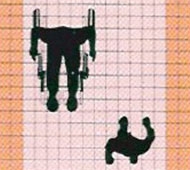Smartips

Improving Access for Persons with Disabilities
Outside and Around Buildings
- Pedestrian routes in open spaces or between buildings should be free from obstructions.
- Street furniture, bollards, gulley gratings and signposts need careful sitting as they can be hazardous.
- Pathways should be wide enough for wheelchair users. Surfaces should be slip-resistant.
- Where there are changes in level, shallow ramps should be provided in addition to steps and stairways which are clearly marked, and provided with handrails.
- Public toilets for PwDs should be sited where they are accessible and usable.
Carparking Space
- A place to park adjacent to a building or complex is essential for either passengers or drivers with a disability.
- Parking bays should be sufficiently wide to allow access for wheelchair.
- A route from a parking place to a building should be level or ramped and unimpeded by steps.
Entrance to Building
- Entrance to a building should be easy to distinguish and preferably be under cover.
- The access should be level.
- Entrance door should be easy to open and wide enough to permit entry of a wheelchair. Automatic door is convenient to the elderly and wheelchair user. Revolving doors and frameless glass doors are hazardous.
Inside the Building
- Inside the building, floor surfaces should be slip-resistant.
- Where there are changes in level, ramps should be provided.
- Step and ramp should be clearly marked.
- Where a building is multi-storey, a lift with controls that are usable from a seated position should serve all main circulation areas which provide facilities.
- Lift should be large enough for a wheelchair and one other person.
- Amenities for example, lavatories and telephones should be clearly signposted and usable.
Visual, Audible and Tactile Aids
- A building will be easier to use where signposting is legible, well illuminated and where lettering and numerals are embossed or raised.
- Names and numerals on doors should be at eye level.
- A building will be easier to use where there is a loudspeaker system, inductive loop system and where audible signals are interlinked with visual signals.
- Switches and environmental control must not be out of the reach of people who use wheelchair.
- A contrast in colour, distinguishing routes and parts of buildings, together with changes in floor texture where there are hazards, will assist the visually impaired.
Safety
- A known and well managed scheme to assist PwDs moving from buildings in an emergency will eliminate much of the prejudice which often bars persons from getting into buildings.
Equal & Dignified Access
- It is important to provide an equal and dignified access to All. No matter the sex, age, physical or sensory disability is.
- Some PwDs rely on handrails or sticks, wheelchairs and guide dogs, essential aids in their ability to use buildings. No one should be barred on account of a disability from entering a place which has been designed for public use.
◀ back
▲ Return to top






_content.jpg)


_content.jpg)











